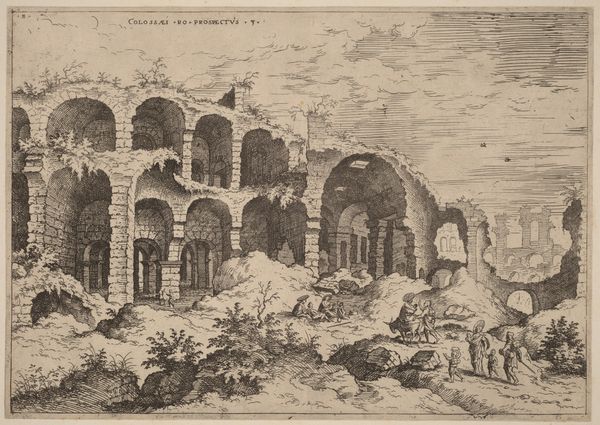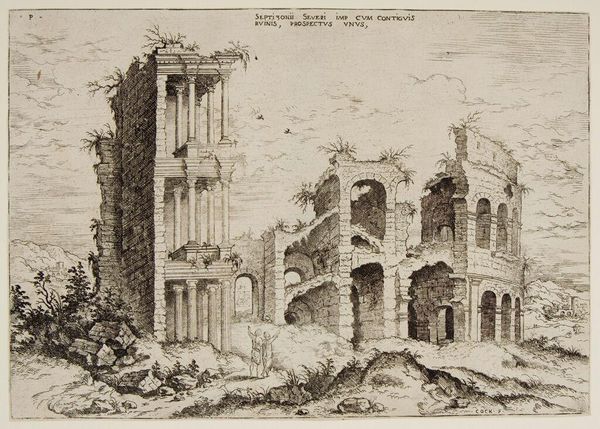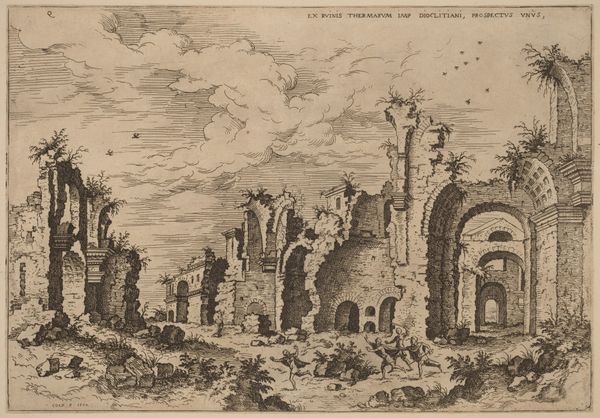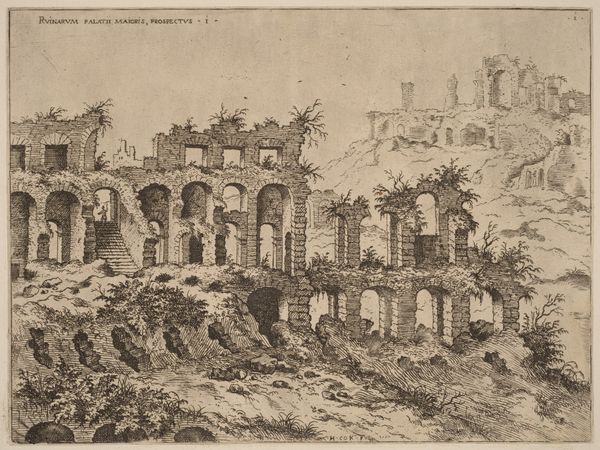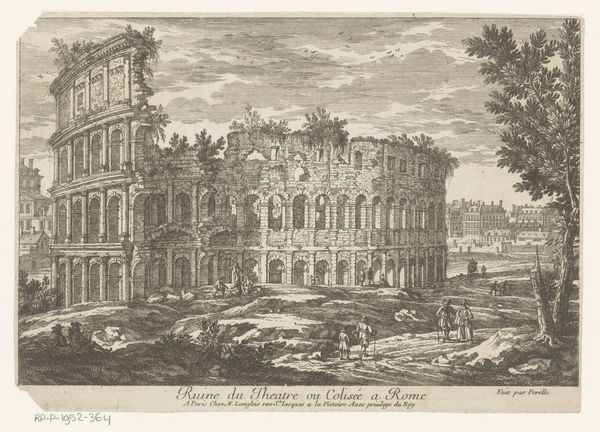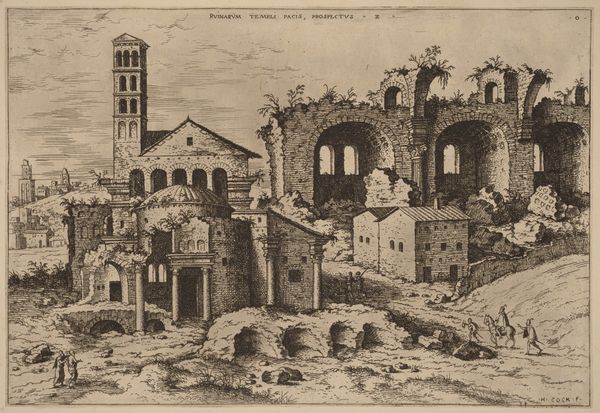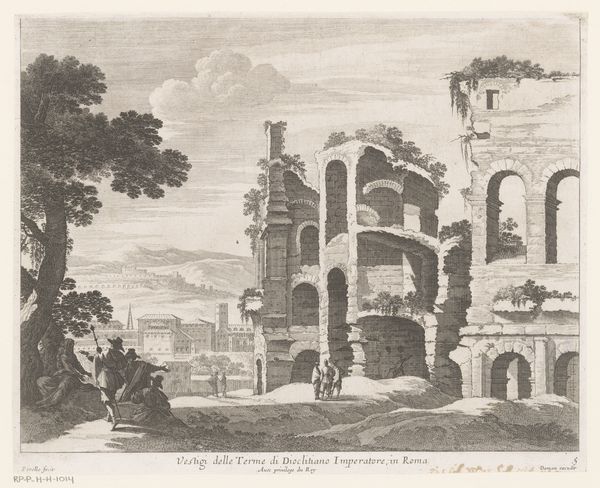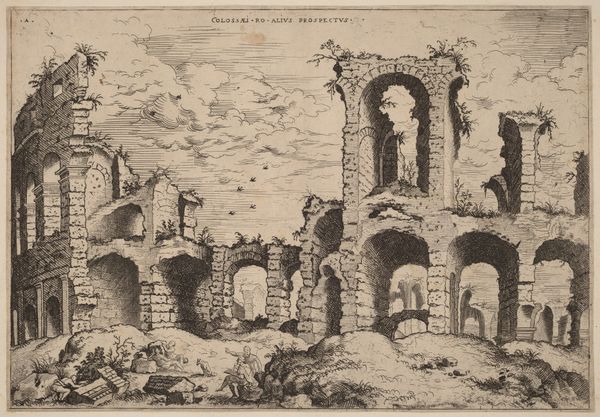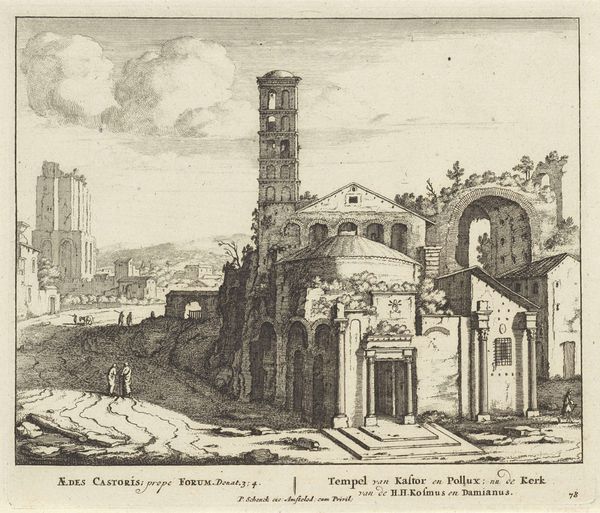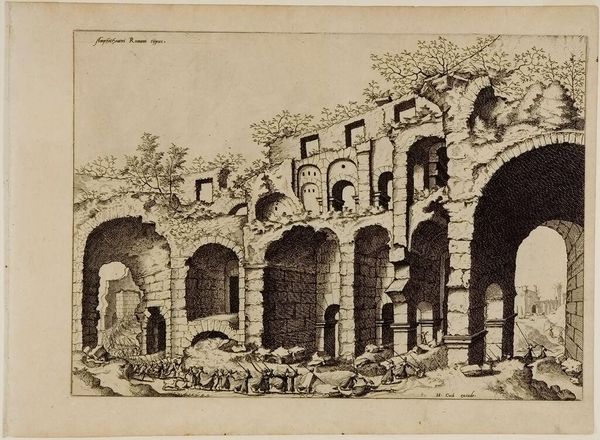
#
pencil drawn
#
amateur sketch
#
aged paper
#
toned paper
#
light pencil work
# print
#
pencil sketch
#
old engraving style
#
pen-ink sketch
#
pen work
#
pencil art
Dimensions: sheet (trimmed to plate mark): 22.4 x 32 cm (8 13/16 x 12 5/8 in.)
Copyright: National Gallery of Art: CC0 1.0
Editor: Here we have Hieronymus Cock’s print, "The Septizonium and the Colosseum," from around 1550. It’s fascinating to see these iconic structures rendered in such detail, but also… dilapidated. What stories do you think this ruinous state tells us? Curator: Exactly! It's a print depicting Roman ruins, but not just as they are; it's about the dialogue between past grandeur and present decay. Consider the historical context: Rome was still grappling with the aftermath of various sacks and political upheavals in 1550. What does it mean to depict these symbols of power in a state of ruin, overgrown with vegetation? Editor: I guess it shows how even the mightiest empires eventually crumble? Is it like a commentary on political power? Curator: Absolutely! It critiques the very notion of permanence and dominance. It raises questions about what societies choose to preserve and what they allow to fall into disrepair. The contrast between the decaying structures and the tiny figures in the foreground highlights human vulnerability against the backdrop of historical forces. It pushes us to confront our own impermanence, and perhaps, even question what structures of power *we* uphold. What kind of narratives do we risk erasing if we only value the "intact"? Editor: That’s a great point. I hadn't thought about it as actively questioning what's lost and whose stories are forgotten. Curator: And notice the vegetation, suggesting nature reclaiming what was once dominated by human construction. Think about the colonial undertones inherent in such domination of land and resources. Isn't it interesting that these romanticized ruins actually serve as cautionary tales about power, loss, and ultimately, about what we choose to value as a society? Editor: It definitely is! It completely reframes how I see this piece. I was so focused on the visual details that I missed the larger social commentary. Curator: Art invites us to engage, to question, and to consider perspectives beyond the immediately visible.
Comments
No comments
Be the first to comment and join the conversation on the ultimate creative platform.
